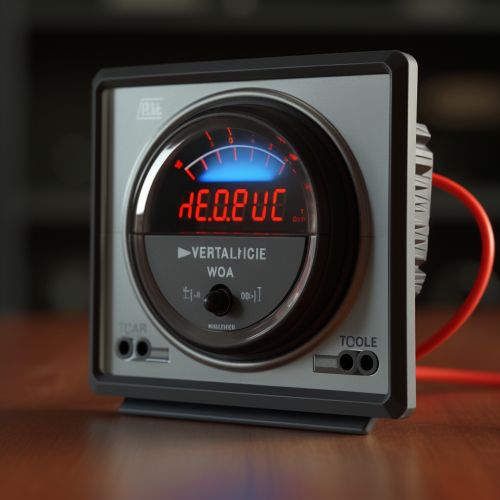Voltage
Introduction
Voltage, also known as electric potential difference, is a fundamental concept in electricity and electromagnetism. It is a measure of the electric potential energy per unit charge in an electric field. Voltage is typically measured in volts (V), a unit named after the Italian physicist Alessandro Volta who invented the voltaic pile, the first chemical battery.


Basic Concept
Voltage is the work done per unit charge to move a test charge between two points against the electric field. It is a scalar quantity, meaning it has magnitude but no direction. The voltage between two points in a static electric field is defined as the work needed to move a unit positive charge from the lower potential point to the higher potential point.
Measurement
Voltage is measured using a device called a voltmeter. Voltmeters are designed to measure the potential difference between two points in an electrical circuit. They are usually connected in parallel to the circuit component across which the voltage is to be measured.
Voltage in Circuits
In an electrical circuit, voltage is the force that pushes electric current through resistive loads. It is the source of energy that powers electrical devices such as light bulbs and electric motors. The voltage drop across an electrical component in a circuit is equal to the current flowing through the component multiplied by its resistance, according to Ohm's Law.
Types of Voltage
There are two main types of voltage: direct current (DC) voltage and alternating current (AC) voltage. DC voltage is constant over time, while AC voltage varies in a periodic manner. The voltage in most homes and businesses is AC voltage, which changes direction and amplitude 50 or 60 times per second, depending on the country.
Voltage and Power
The power delivered to an electrical device is equal to the voltage across the device multiplied by the current flowing through it. This is known as the electric power formula. The unit of power is the watt (W), which is equal to one volt-ampere.
Voltage and Energy
Voltage is directly related to electric energy. The energy (E) delivered by a voltage (V) moving a charge (Q) through an electrical potential difference is given by the equation E = VQ. This relationship is fundamental to the operation of many electrical devices.
Safety Considerations
High voltages can be dangerous, causing electrical shock or electrocution. Safety measures such as insulation, grounding, and circuit breakers are used to protect against high voltage hazards. It is important to remember that it is not just the voltage that is dangerous, but also the current that the voltage can cause to flow.
